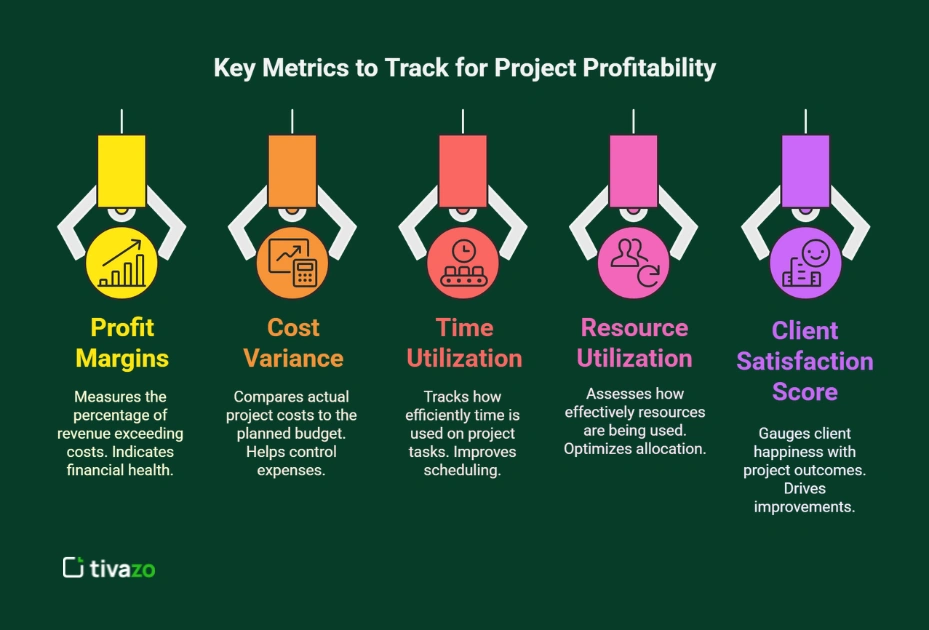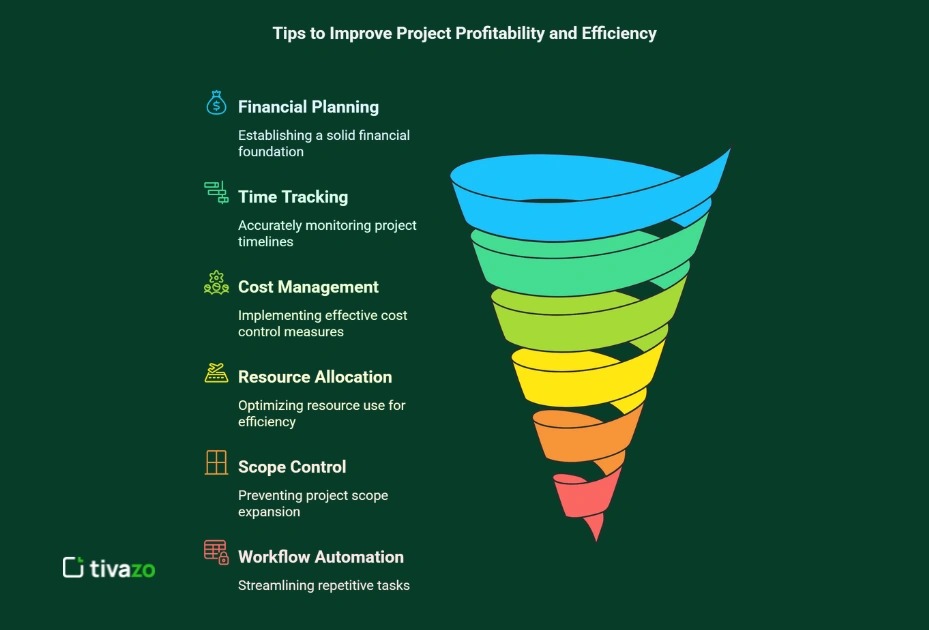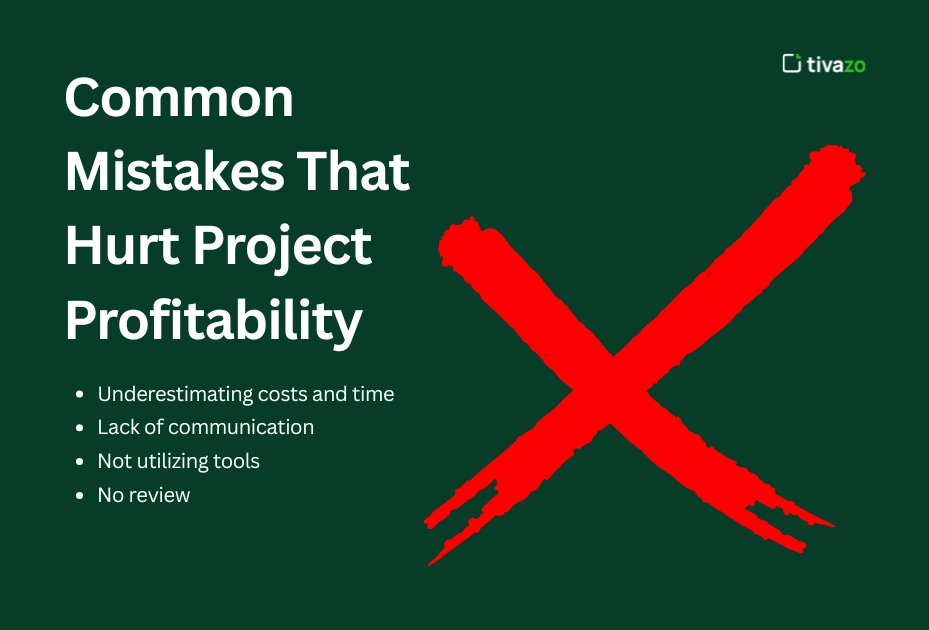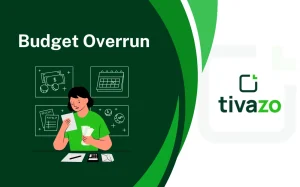In today’s competitive business environment, making projects profitable is not simply a potential advantage, it is a necessity. If you are currently a small business owner, a freelancer, or a project manager, understanding project profitability is a key to success in the long term. With that said, many people are unsure how to achieve profitability with cost management, people, and time.
Project profitability are not an accident, they are achieved with a plan, ongoing monitoring and smart decisions along the way. You certainly do not need to be a finance wizard to improve your margins; you just need to have a strategy. This blog will unpack some of the essentials in a way that we can all understand.
You will find 8 real strategies that will facilitate cost management, managing people, managing your time, for the overall purpose of project efficiency and being financially productive.
Key Takeaways:
- Why Project Profitability Matters More Than Ever
- Key Metrics to Track for Project Profitability
- Tips to Improve Project Profitability and Efficiency
- Common Mistakes That Hurt Project Profitability
- Conclusion
- FAQs:
Why Project Profitability Matters More Than Ever

To put it simply: project profitability is the difference between your revenue on a project and the total cost (in time, materials, etc.) to deliver it. If costs exceed earnings, your project is unprofitable.
But it’s more than just metrics. Profitability tells the story of project planning, management, and ultimately project delivery, and in turn it captures the essence of how you managed time, resources, and client expectations.
So why does this matter?
- Sustainability: Project profitability allow you to set yourself up for future success. They give you an opportunity to reinvest in the tools, talent, and innovation you need to fuel your business’ future.
- Client trust: When you deliver on time and on budget, clients are more likely to consider you for their future work.
- Team morale: Success builds momentum. When team members see their work, and the team’s overall work is worthwhile and impactful, it increases ownership and engagement.
- Decision-making: Understanding where your profit margins are allows you to help decide which projects are worth putting your time and resources into.
In a world of rapidly increasing expectations for delivery speed and rising costs, profitability is not just a goal but rather must be a strategy you embrace for business survival. When you continually measure your profitability and work to improve your profitability you are doing what you can to remain competitive and to safeguard business longevity.
Key Metrics to Track for Project Profitability

Before getting into real world practices, it is essential to fully understand how to properly measure project profitability. Monitoring key performance indicators (KPI’s) ensures you’re not merely delivering projects on time but also profitably. Here are some essential metrics to monitor:
- Profit Margins: This is what your project actually profits after the costs are subtracted from the project revenue. High profit margins mean the project is profitable. Tracking this periodically allows you to know which project is the most valuable to your business.
- Cost Variance: This metric represents the difference between the nominal budgeted costs and what was spent or actual costs incurred. Lower cost variance indicates you are effective in controlling costs. This is a direct indicator of good cost control practices.
- Time Utilization: This factor demonstrates how effectively your team’s time is being utilized. By monitoring how many billable hours are being logged compared to the total worked hours allows you to see greater detail of how much of your team’s time is actually generating revenue. Increasing utilization gives better project profitability and efficiency.
- Resource Utilization: Are you getting full utilization of your people and tools? This metric helps evaluate your utilization reporting and awareness of over or under-resource utilization. Evaluating and seeking optimal utilization increases output and value for cost.
- Client Satisfaction Score: While it is not a financial measurement, happy clients are more likely to re-engage, share with others, and allow you to raise your prices. Client satisfaction will be the deciding factor in whether the long-term project was a win and whether you are profitable on the recurring portion of the project.
If you properly track these metrics consistently you can discover trends, recognize issues early, and make adjustments in real time. They give you a complete picture of how your team is doing (operationally and financially) and you can make intelligent decisions to maximize profitability.
8 Tips for Increasing Project Profitability and Efficiency

We covered how and why it is important to track these metrics and understand your numbers. Now we are going to highlight the real game changers, the actions you can take today to improve project profitability and increase efficiencies for your team. These eight tips are not theoretical, they are strategies and tips utilized by organizations and companies of all sizes in conducting successful, project profitability.
Whether your need is to tighten budgets, manage your teams better, or simply keep on schedule, the tips below should give you a straightforward way to take control and put profits in your pocket.
1. Start with Solid Financial Planning
A important part of any successful and profitable project is financial planning. So think about it like planning a road trip; you wouldn’t just get in your car and begin driving without a route or a plan, would you? Without a clear financial plan, you’re opening yourself up to a lot of potentially wasted time and money, and the risk of running out of resources is substantial.
- Set a Practical Budget: Look at your previous project data, and/or industry performance benchmarks, to estimate and include every cost item accurately and realistically. This means everything! Employees’ wages, equipment costs, software tools, materials, etc. Try not to guess, as these types of projects present hardly any certainty or margin for error, and an unrealistic budget could be very damaging!
- Manage Risk: All projects have an element of uncertainty – unexplained schedule delays, price increases etc. Be aware of the risk factors in your project, and if appropriate add a finance buffer you may call on should surprises arise. This will help minimize damaging disruptions to the project if there is a risk schedule and budget overrun.
- Ensure Financial Inclination: Ensure your projects budget and objectives align with your business objectives, the goals of the project should ultimately fulfill the business objectives, strategies, plans and success criteria to support the bigger corporate ambition.
With a well defined and practical financial plan you should minimize unwanted surprises, keep the project on track, and that should lay the groundwork for some profitability.
2. Track Time Accurately with the Right Tools
Time is perhaps the most precious resource in any endeavor—when time is wasted, money is lost. With effective time tracking, you will know exactly how many hours your team spends on each task to help avoid missed deadlines or tracking un-billed work.
- Use time tracking software: Software like Tivazo will record the hours worked for you automatically, this will simplify the process and lessen the chance for error compared to manual time sheets.
- Know the difference between billable versus non-billable hours: Billable hours when you spend time working on client work (the time you will bill for), non-billable hours are everything else: meetings, training etc. Keeping these hours separate will help avoid not billing a customer properly and losing money.
- Encourage daily time reports: Log details each day. It is much easier for team members to log what work they did on a project each day instead of trying to remember it weeks later. This significantly improves detail accuracy.
Tracking time effectively will help you control costs, will help you productivity, and will basically increase your profit margins overall.
3. Strengthen Your Cost Management Strategy
Cost management means attention to detail when it comes to project costs. If you let expenses accumulate without tracking, costs can escalate quickly and eat into your profits.
- Categorize Costs: A helpful tool is the cost category. Categorizing costs can include project staff salaries, tools, materials and overhead (rental, for example). Categorizing costs makes it much easier to see where costs are concentrated.
- Real-Time Dashboard: Don’t wait until after a 100% completion project and check actual compile costs. Live dashboards will show the cost as you go and assist with taking action on immediate costs that maybe identified and trending upward.
- Regular Review: Don’t wait too long for making a regular cut off between budgeted costs and actual spend; a weekly review of costs can identify and eliminate overspending before it becomes too far over-budget.
Strong cost management is one of the fastest ways to protect your project profitability.
4. Optimize Resource Allocation
Your team and tools are valuable resources – managing them properly will only save you time and money.
- Match Tasks to Skills: Assign tasks based on the strengths of your team members’ and their experience. This will help improve quality and speed of delivery.
- Avoid Under/Over use of resources: If someone is idle, you are wasting their capabilities, if they are overloaded, their productivity will suffer. By balancing the workload on your team you will maintain productivity.
- Monitor Resource Load: Utilize resource planning tools that track who is working on what, and how long they are spending on the tasks, so that you can redistribute workloads if necessary.
When you optimize resources you improve your project efficiency and it helps your team to perform more effectively, it can also save you money.
5. Prevent Scope Creep Before It Starts
Your team and tools are valuable resources – managing them properly will only save you time and money.
- Match Tasks to Skills: Assign tasks based on the strengths of your team members’ and their experience. This will help improve quality and speed of delivery.
- Avoid Under/Over use of resources: If someone is idle, you are wasting their capabilities, if they are overloaded, their productivity will suffer. By balancing the workload on your team you will maintain productivity.
- Monitor Resource Load: Utilize resource planning tools that track who is working on what, and how long they are spending on the tasks, so that you can redistribute workloads if necessary.
When you optimize resources you improve your project efficiency and it helps your team to perform more effectively, it can also save you money.
6. Use Project Management Tools for Full Visibility
Contemporary project management software allows you to have an overall view of your project in real-time.
- Utilize Dashboards and Timelines: Whether in spreadsheets, long lists, or boards, visualizing your projects will help you track your progress and deadlines at a glance.
- Consolidate Communication: Keeping all communications, files, and updates in one location, it eliminates any confusion about who shared what where.
- Establish Automatic Alerts: When actions are stalled or budgets exceeded, you will be alerted and able to react quickly.
With full visibility, you can make smarter and faster decisions that lead to successful project work.
7. Automate Repetitive Workflows
Automation reduces time spent on tasks and human error by having software do the busy work.
- Automate Timesheets and Invoicing: Automatic tracking of hours worked and invoicing cuts out human error.
- Use Templates for Reporting: Reusing the same standard report time after time will save you a great deal of time compared to creating a new one each time.
- Schedule Reminders: This will help ensure that important deadlines and follow-ups aren’t missed.
By removing low-value work, you will allow your team to start focusing on work with high value and impact to profitability.
8. Review Project Performance and Learn from It
No project is perfect — but each project offers learning moments.
- Conduct a Retrospective Meeting: Once the project ends, get your team together and discuss what went well and what did not.
- Review KPIs: Critically review your actual costs against your planned costs, actual time required against planned time, and actual profit against planned profit.
- Apply the Lessons: Use what you learn to improve planning and execution for future projects.
Continuous improvement helps you build more profitable projects over time and avoid repeating mistakes.
Common Mistakes That Hurt Project Profitability

Mistakes are damaging to your project profits, and knowing them can help avoid expensive errors.
- Underestimating costs and time: Being overly optimistic can result in blown budgets and deadlines. This is very frustrating for clients and can cut into profit margins quickly.
- Lack of communication: Failure to communicate is also costly. Delays, mistakes, and rework can waste time and money.
- Not utilizing tools: If you don’t use time tracking or project management tools, it will be hard to track status and costs for your project. This poses a risk to the profitability of your project.
- No review: No post project review means that you do not get to learn or improve upon anything. Making the same mistakes over and over again is frustrating.
You will have much more chance of keeping your projects profitable and headed in the right direction if you are mindful of these pitfalls.
Conclusion
To improve profitability across a project, it’s not about spending more time doing it and pushing your teams, it’s about doing it smarter and making good decisions. Utilize good tools, actively track and cost management, manage your time and track it accurately, and properly utilize your resources to deliver a higher quality project while keeping your budgets in control and minimising pressure on your teams.
If you take a good look at the 8 practical tips above you will gain much better control of your projects. Whether you’re new to project management or an experienced professional, you will learn ways to behave with a high level of project efficiency and improve your ability to deliver profitable results time and time again. Keep in mind that good planning, monitoring, and improving gives you the best shot at success.
When you focus on these areas you are not only improving project profitability, but you are also laying a foundation for sustainable growth and success for your business.
FAQs:
What is meant by project profitability?
Project profitability means that the project yields financial gain after costs are subtracted from revenues. Simply stated, if you earn more than you spend, your project is profitable. Profitability analysis is useful because it’s a good way of assessing how well a project was planned, executed and managed from a cost perspective.
What are the three main measures of project profitability?
There are three fundamental metrics:
- Profit Margins: Revenue minus the cost of the project.
- Cost Variance: The difference between estimated and actual costs.
- Time Utilization: How effectively billable hours are spent.
How do you project profit?
You project profit by estimating total project revenue and subtracting all expected costs, including labor, tools, materials, and overhead. Using data from past projects, real-time dashboards, and forecasting tools helps make these estimates more accurate.
How to make money for a project?
To make money from a project:
- Make a realistic, well thought out budget plan.
- Record time and expense accurately.
- Avoid scope-creep.
- Resource allocation, go through your hours and assign them wisely.
- Automate tasks and use project management tools to stay on time and under budget.
What do you mean by cost management?
Essentially, cost management is the planning, monitoring, and controlling of your project expenses to stay on budget, aid profit maximization and seek to avoid financial surprises during execution.
What are the 4 steps of cost management?
The four key steps are:
- Cost Estimation – Predicting the financial resources needed.
- Budgeting – Allocating the estimated costs across project phases.
- Cost Monitoring – Tracking actual spending in real time.
- Cost Control – Making adjustments to stay within budget and increase profitability.




